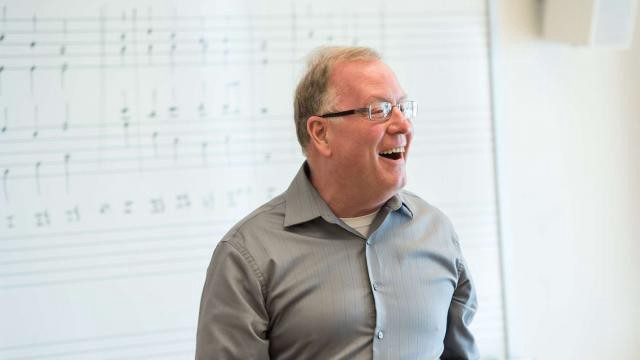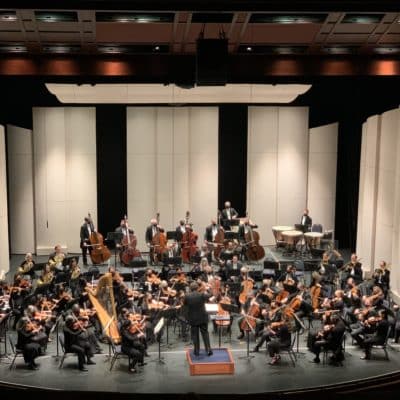Marianna Martines (1744–1812)
Sinfonia (Overture) in C Major (1770)
The name Marianna Martines might not be familiar to modern music lovers, but the names of those in her circle most likely are: composers Joseph Haydn, Johann Adolph Hasse, and Giuseppe Bonno, Vienna court poet Metastasio, English critic and musical gadly Charles Burney, Empress Maria Theresa and her son Emperor Joseph II. She was considered a glowing prodigy and was the first woman ever to be admitted to the Accademia Filarmonica in Bologna—a distinction she shared with Wolfgang Amadeus Mozart, among others. She was a masterful keyboard player and an enchanting singer. She was the real McCoy, in other words—an A-list artist with substantial published compositions and a solid coterie of highly discriminating admirers.
Her reputation was almost entirely local to Vienna, however. And posterity has imposed stringent filters on those many excellent musicians who were active in Enlightenment Austria but whose names weren’t Haydn or Mozart. Martines is hardly the only one whose fame has faded, but fate’s workings seem particularly cruel given the high quality of those compositions that have survived.
Thus Martines’ early Sinfonia, a.k.a. Overture, in C Major. (The two terms were interchangeable throughout the 18thcentury, given that sinfonias, a.k.a. symphonies, evolved from opera overtures.) It’s an ingratiating, attractive example of the chipper Italian manner then prevailing in Austrian music, thanks to open exchanges between Naples, Bologna, and Vienna. The three-movement layout is typical of the time, as is the busy-beaver string writing in the first movement, the lyrical wind writing in the second, and the lighter-than-air dance of the finale.
Ludwig van Beethoven (1770–1827)
Piano Concerto No. 5 in E-flat Major “Emperor”, Op. 73 (1809)
“String snapper, hands on high” reads the chapter title on Beethoven in critic Harold C. Schoenberg’s The Great Pianists. Altogether apt, that description, and indicative of far more than a mere tangle of broken wires. It wasn’t just that Beethoven could pulverize the flyweight pianos of his day. It was the attitude underpinning that oh-so electrifying stage presence, all that charisma directed not only at the hapless instrument before him, but extended outward to encompass his entire dazzled/browbeaten audience. In many ways, Beethoven was the first virtuoso showman of the concert stage, and he paved the way for such barnstorming superstars as Niccolò Paganini and Franz Liszt.
Given that piano concertos were Beethoven’s chosen vehicles for his more exhibitionist public appearances, it’s a bit surprising that he didn’t write more than five. But there it is. Those five concertos carve out a clear evolution from the distinctly Mozartean vibe of No. 2 in B-flat Major (actually the first to be composed), to the altogether Beethovenian roar of the “Emperor” Concerto No. 5 in E-flat Major, Op. 73, as the formerly chamber-oriented and collaborative genre took on a David-and-Goliath aspect, the solo pianist placed in heroic combat against a massive orchestral opponent.
The gauntlet is thrown down at the very opening, as a single heraldic chord in the orchestra is answered by a flamboyant display from the soloist. Two more such exchanges follow, the piano solo waxing yet more eloquent and intricate with each effusion. Only then does the first movement settle into the expository orchestra-alone passage that had been de rigueur for concertos up to then there had never been an opening like it, this grandiose kickoff to a supersized concerto for the Napoleonic era, and what followed was altogether unprecedented in not just length, but in emotional range, demeanor, and affect. Written during the darkest days of Napoleon’s siege of Vienna, the “Emperor” concerto offers unquenchable optimism, answering despair with hope, terror with joy, and oppression with freedom.
Ralph Vaughan Williams (1872–1958)
Symphony No. 5 in D Minor (1943)
The oft-encountered bromide that English music doesn’t export well is nowhere more apparent than in the scarcity of the Vaughan Williams symphonies in American concert halls. Why this should be so is both a mystery and a crying shame. After all, there’s nothing about them that precludes a non-English audience’s appreciation, understanding, or affection. Each of the nine symphonies is a world unto itself, from the late Romantic choral splendor of the “Sea” Symphony No. 1 through the autumnal introspection of the Ninth in 1958. These are masterfully constructed, expertly orchestrated, deeply felt, and altogether splendid examples of the symphonic art at its best as of the early 20th century. Nevertheless, American listeners encounter the symphonies largely via recordings by mostly English orchestras and conductors.
Ralph (pronounced ‘Rafe’) Vaughan Williams was of a distinctly different stripe than the clubby gents who made up the bulk of Britain’s compositional elite around the turn of the 20th century. Far less Germanically-oriented than such stalwarts as Charles Villiers Stanford or Hubert Parry, Vaughan Williams studied for a brief but intense period with Maurice Ravel and dug in deep to the folk roots of native English music. His style was vivid and highly personalized; there’s just no mistaking Vaughan Williams for anyone else, whether in his English pastoral or aggressive modernist modes. Of all early 20th century composers his closest counterpart would seem to be the great Finnish symphonist Jean Sibelius, surely more so than any of his English colleagues.
One can make an excellent case for Symphony No. 5 in D Minor as the perfect entry point to the Vaughan Williams symphonic oeuvre. It’s a lyrical, reflective piece written for a relatively small orchestra—reduced brass and no percussion save timpani—largely built out of materials from The Pilgrim’s Progress, an opera that had engaged Vaughan Williams for over thirty years and which he suspected he might never complete. (Nota bene: he did.) Written and premiered as the Second World War raged, the Fifth offered balm, respite, and a generous equanimity during those terror-wracked years—just as it continues to offer its comforting and healing presence to its listeners today.
Program Annotator Scott Foglesong is the Chair of Musicianship and Music Theory at the San Francisco Conservatory of Music, and a Contributing Writer and Lecturer for the San Francisco Symphony. He also leads the California Symphony’s ground-breaking music education course for adults Fresh Look: The Symphony Exposed.
The California Symphony’s 2021-22 season opener Emperor featuring Adam Golka takes place Saturday, Sept. 18 at 7:30 PM and Sunday, Sept. 19 at 4 PM at the Lesher Center for the Arts. Tickets are $44 to $74 and subscription packages of 3 or more concerts start at $33 per concert. Buy tickets online or call or visit the Lesher Center Ticket Office at 925.943.7469, Wed – Sun, 12:00 noon to 6:00 pm.




